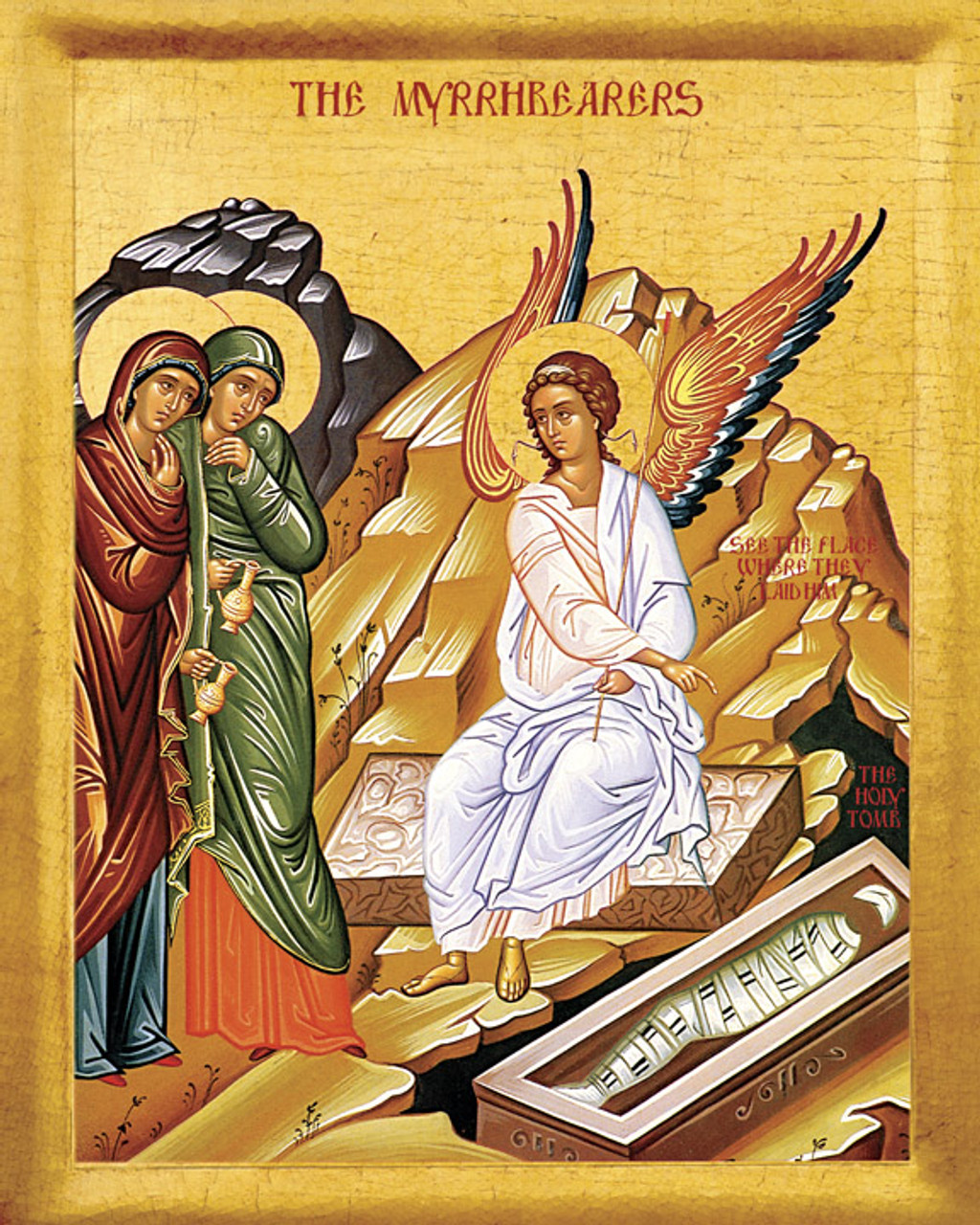Categories
Tap or mouse-over on people, animals, objects, symbols, etc. in the icon to learn what they mean. More icons coming soon!
The jagged rocks of the dark cave symbolize the barren, hostile and fallen
world into which Christ is born. The cave is a symbol of the human heart
where Christ desires to enter and live. In his song, the righteous Zechariah,
the father of John the Baptist, sings of how "in the tender compassion
of our God, the dawn from on high shall break upon us, to shine on those
who dwell in darkness and the shadow of death, to guide our feet into the
way of peace." --
A midwife washes the infant Christ to show that indeed he was born as
a baby and received a first bath like all of us.
Holy Tradition teaches that the young girl attending the midwive is Salome,
who will later become a follower of Christ and one of the myrrh-bearing
women.
Joseph the Betrothed is depicted in anguish, perplexed about the pregnancy
of the Holy Virgin. The figure next to him is the Devil, planting these
doubting thoughts into his mind. Demons in the form of dark animals appear
nearby.
An angel looks with awe at the rays of the star which is shaped like a
cross, symbolizing the destiny of the Christ-child. It also resembles a
sword which appears to break through the jagged rocks. When followed further
down the icon, it points directly at the Christ child and then thhe heart
of the Theotokos echoing the words of St. Symeon, "and a sword will pierce
through your soul" --
Angels bow before the Christ-child, their hands covered as a sign of great
reverence for the "One who is beyond man's touch." (Nativity Hymn)
The Holy Virgin is depicted reclining on a red blanket symbolizing both
life and divinity. According to the Holy Tradition, she is shown in a serene
pose to symbolize the painless labor of the miraculous conception and birth
of Christ in which her virginity was also preserved.
The Magi traveling from the East, looking up and following the star. In
the hymn for the Nativity, the Magi are referred to as "those who worshipped
the stars." Their worship of stars led them to worship Christ, who is called
the "Sun of Justice" .
The Christ-child lies in the manger which is depicted as a tomb, symbolizing
the destiny of the One who came to die for us and be laid in a tomb. His
face appears older than a baby to symbolize that he is the Ancient of Days.
. The swaddling clothes resemble burial cloths in which he will be wrapped.
The icon of the myrrhbearing women below replicates this composition showing
the empty tomb and discarded burial cloths.


A choir of angels sing "Glory to God in the Highest, peace and good will
among all people" --
The angels appear to humble shepherds in the field who are watching their
flock in the night and announce to them the birth of the Savior. Christ
will also be known as the Good Shepherd who watches over his flock. One
shepherd is blowing a trumpet to symbolize being the first to hear the
announcement of the birth of Christ.
Along with angels, shepherds and wise men, the animals also recognize
their God and glorify Him who has come to save them, his beloved creation.
Their presence near the crib, manger or feeding trough in the icon, is
a reference to the prophecy of Isaiah. "The ox knows its owner and the
donkey its master’s crib; but Israel does not know, My people do not
understand.†--
The star appears over the place where the child was. - . St. John Chrysostom
and Blessed Theophylact of Ochrid teach that the star was not a comet but
the Archangel Gabriel.
Katavasias of the Nativity
Kontakion of the Nativity
0 likes
342 views






